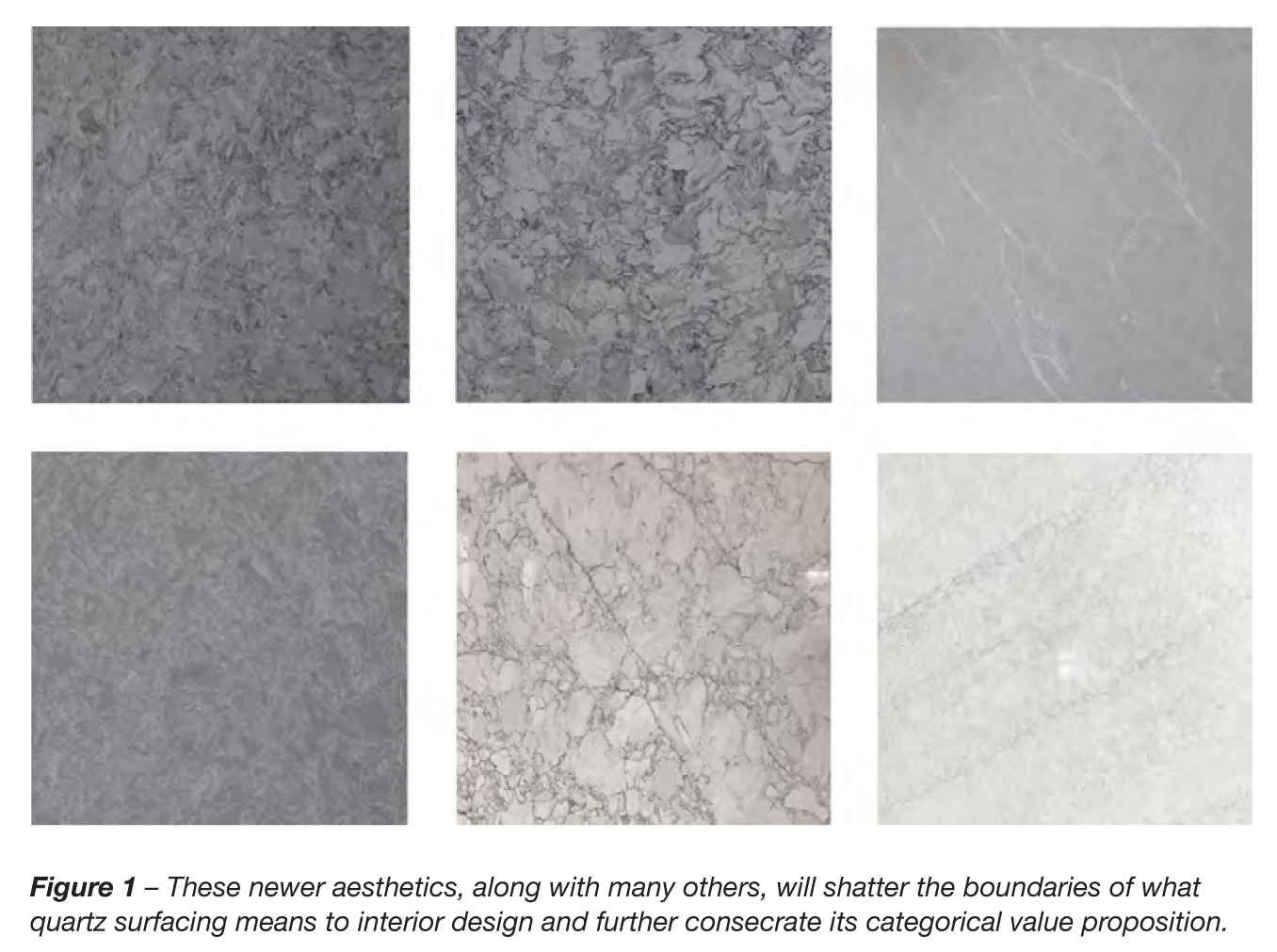|
Infinity Shades of Gray “The kitchen industry’s leading manufacturers say that while white cabinets continue to be tops, gray is the shade they’re betting on to break white’s top spot,” according to HGTV. com. While this notion may not be universal amongst design experts, what appears true is the gray momentum is neither slowing nor contracting. Just look at the number of gray cabinet doors styles being introduced, new gray shades of paint available, gray hues being rubbed onto warm woods for flooring, gray tiles and all the new grayish aesthetics in surfacing being introduced. This article was written as the sequel to my original article published (on LinkedIn) back in April of 2015. Its purpose is to bring focus to the ever-expanding mystery around designing with gray and equally, drawing parallels into the powerful statement grayness makes on our consciousness and leadership abilities.
Gray as a Concept As a brief refresher: Einstein effectively proved that reality is relative in his work on the “Special Theory of Relativity.” An observer’s frame of reference produces a calculable reality whose results can differ from another’s conducting the same experiment. Said in a slightly different way, there is no experiment that can prove the absolute motion of the observer. Motion is relative to the observer and different observers can produce different results — strange and counterintuitive, but true. That said, in 1935, Erwin Schroedinger invented a thought experiment (Schroedinger’s Cat) using quantum mechanics (then the hottest area of study in physics) to demonstrate that reality was not absolute. The experiment linked calculable probabilistic events to a living being creating what was called a super-position state — meaning, reality was not on a defined continuum but on a probabilistic continuum. He showed how reality depended on the act of inspection of the observer, the result of which collapsed the quantum state into a definite state. Sadly, Einstein died trying to denounce the laws of quantum mechanics, saying that nature at the most fundamental level cannot be probabilistic. (Einstein was a staunch defender of determinism.) In the ultimate twist of irony: Einstein died trying to disprove what he essentially proved — reality is not absolute. A natural extension of this would be to rid ourselves of absolutisms: this or that, black or white, etc. We can then allow for some middle ground and solutions that are a win/win to produce sustainable results. Simple? Obvious? Perhaps not. Weekly, if not daily, I encounter absolutisms in the lay, general management, and most dangerously, leadership positions that polarize thinking and limit the creativity and breadth of possibilities that accompany flexibility. How does one know when they are encroaching into the realm of absolutisms (also referred to as dualistic thinking)? Easy, listen carefully. One way is to discern the use of “always” and “never” when woven into making a point. Micromanaging can also be the result of dualistic thinking (as well as other character related phenomena) as free reign to determine a best path forward under a given set of circumstances is mitigated by imposition of a more rigid set of rules. Cannot the same end be reached by more than one road — even if a road needs to be paved? These are merely some examples, as the tell-tale signs of dualistic thinking abound. You might now be asking, “OK, so why is a building materials guy talking about philosophy and quantum mechanics as it relates to aesthetics and design?” It’s quite simple, really. By framing the dynamic of grayness, we can learn to appreciate why gray is timeless and universal. Much as there are infinite numbers between the integers 3 and 4, there are also infinite shades of gray between platinum and slate gray. Shades of (the Color) Gray Flexibility woven into interior design manifests itself as the ability to change the essence of an environment without destruction. Given the myriad shades of gray, customizing most any space becomes an exercise in complementarity. That is, having color combinations that coordinate, accent and synergize for a perception. Rebecca Bates, agreed in an online article published by Architectural Digest in September, when she stated, “When it comes to neutrals, gray has been the hot shade for the past several years and its popularity has yet to wane. Once associated with sadness and dreariness, the color has gained in popularity among top designers, who appreciate its versatility and sophistication. With more depth than white, the shade serves as a sophisticated backdrop to any space.” Note: The entire article, “41 Exquisite Gray Rooms from the AD Archives,” can be found at www. architecturaldigest.com/gallery/best-gray-roomsneutral-color-paint-inspiration/all/. Even among gray there can be grayness. Although the historical monochromatic grays will always have a degree of relevance in interior design, just imagine the world of possibilities that abound in coupling the quintessential neutral color with cutting-edge and patented blending technology. It’s a renaissance to an already highly sustainable trend. See Figure 1 for a few next-generation quartz surfacing aesthetics that will explode the possibilities of emotional and intimate design. These aesthetics, along with many others, will shatter the boundaries of what quartz surfacing means to interior design and further consecrate its categorical value proposition. In another article I penned titled, “Spectrum Quartz: Creating a Paradigm Shift in Quartz Surfacing,” I offer my opinions on how and why aesthetic innovation is the most sustainable business strategy in the segment of building materials. Colors and aesthetics can drive consumer tastes and preferences. Therefore, desirable, functional and sustainable innovation can draw the investment dollars from a wide array of users (millennials, designers, architects and developers, to name a few). I have had several discussions recently over the many “color of the year” (COY) spreads appearing in social media. Even though most of the colors are vastly different, I can remain “gray” in my thinking that there is a time and a place for each, assuming there is no self-aggrandizement in the assertions of my discussion partners. What is clear to me, however, is COYs can be fleeting, transient and perhaps, even fickle. A more dynamic measure of success is the degree to which a trend is timeless. It appears neutrals have an underlying driving force of sustainability. I can personally attest to the reversion back to neutrals in the United States during the “great recession” — this resurgence of neutrals was significant. Perhaps induced by price as many of the neutrals in solid surface, natural stone and quartz were already tending toward affordability. But, my better sense says the primary driver was lack of consumer confidence. Staying neutral in design could optimize project ROI at that time. Going out on an opinionated limb here, staying neutral in design could also have been the manifestation of the financial insecurity of the time. This prudence survived several years and may have fortified a deeply held belief to stay neutral in design. What is also quite beautiful about the gray spectrum are both of its tails; on one side, we morph from light gray into a gray-white and on the other, we move from a charcoal to a grayblack. Oxymoronic perhaps but oxymorons are themselves gray by nature. On both tails of the gray spectrum, designers can use complementing hues that coordinate — maintaining a semblance spatial alignment that can consciously or even unconsciously elicit a certain state of mind. The psychology of color has long been studied, and even here the concepts around gray tend to be more encompassing. Here is an excerpt from an article written in 2017 by Jeannie Matteucci on HGTV.com regarding the different moods you can create with a gray décor: “… using the color gray in your home decor is a great place to start. Gray has an inherent calmness and sophistication. You can choose a solid gray that symbolizes strength, or go for a softer gray that offers a more delicate feel.” The full article can be found at www.hgtv.com/ remodel/interior-remodel/behind-the-color-gray/. Whereas some designers pine for something new and different, there is a reason why neutral is timeless. Supporting the philosophical foundation of this article, however, there is no right and wrong (dualistic thinking) in designing with bold colors. A better way to describe this evaluation is the degree to which your choice of aesthetics and blends meet the needs of your clients. Commercial and residential spaces can easily have alpha and omega positions on color scheme. The psychology of gray is as vast as the color itself — from drab and dreary to confident and stoic. Perhaps the consummate metaphor for yin and yang, the ability of gray to influence our designs, mind-set, consciousness and mood is like no other. New aesthetics with authentic movement and variegation can open a whole new world of possibilities in personal and intimate designs. Have you ever wondered why teak wood gradually turns a silvery gray? Weathering. The sunlight and rain will cosmetically change its appearance. Ironic, no? One of the strongest most durable wood species built to survive the corrosive environment of saltwater and the harsh onslaught of exterior elements, teak is subject to graying. This natural process is beautifully symbolic of the color and all that it represents. Whether gray is used in predominance or accent, its elegant neutrality is timeless. Using cuttingedge aesthetics in designs and allowing specifiers to expand their vision in designing most any space will infuse our industry with growth, innovation and profitability. As leaders and influencers, we must encourage openness and nondualistic thinking so that all possibilities always remain. Corporate cultures revolve around leadership mind-set, and the more open to possibilities and less propensity to control the mind-set remains, the more timeless your organization can become. About the Author Paul Max Le Pera is the Global Vice President of Sales & Marketing for Hirsch Glass & Spectrum Quartz, with 20 years’ experience in business and marketing strategy for the building materials industry. He can be reached at (908) 358-5252 or [email protected]. |

